East Africa August 2023 - Part 1 Kenya
Becky and I visited Kenya and Tanazania during August 2023. We had visited some of the southern African countries including South Africa, Botswana, Zambia, and Zimbabwe in September 2018 (see trip blog on this site). The southern Africa trip was a great adventure and we knew we wanted to return to Africa. We chose "The Best of Kenya and Tanzania" offered by Overseas Adventure Travel (OAT) for this current 2023 safari. We added a five day Kenya pretrip to the main tour. Our goal was to experience the landscapes, peoples, and wildlife of East Africa.
I was particularly keen to experience the "great migration" and photograph wildlife species and behaviors we had not previously seen. The great migration involves an estimated 1.75 million wildebeests moving from the vast Serengeti to the Masai Mara National Reserve.
OAT arranged our air travel from San Francisco to Nairobi. Flight cancellations the morning of our flight resulted in a deviation from the OAT itinerary. We flew from SFO to Detroit, Detroit to Paris, and Paris to Nairobi. After a day and a half of air travel, we and our luggage arrived at the Nairobi Airport where we were met by our OAT trip leader, Fred. We were transported to the downtown Nairobi Eka Hotel where we made it to bed by 2 AM. We had planned to get up at 10 AM and catch breakfast, but we ended up sleeping 14 hours and waking in time for happy hour. So much for getting in sync with the local time zone. The next morning we met five of our fellow travelers and departed on a smallish Kenya Air prop plane for the Samburu Game Reserve in north-central Kenya.
The visits to Samburu and Ol Pejeta Conservancy were a short OAT pretrip we had added to the regular tour. Both locations offered opportunities to observe wildlife species difficult to observe at other tour locations. The Samburu portion of the trip offered the chance to see the "Samburu Five" which included the reticulated giraffe, Somali ostrich, Greavey's zebra, beisa oryx, and gerenuk. The Ol Pejeta Conservancy provided the best opportunities on the trip to see both black and white rhino, including the last two northern white rhinos. Both of these rhinos are female, so they truly are the last.
Samburu Game Reserve
After a two hour game drive from the dirt Samburu airstrip we arrived at Savora Shaba Lodge, our home for the next two nights. This part of Kenya is hot and very dry. The lodge is on the banks of the Ewaso Nyiro River within a 10 acre cedar forest. This location proved excellent for birding, especially water dependent birds like herons, egrets, kingfishers, storks, ibis, hammerkops, and plovers.
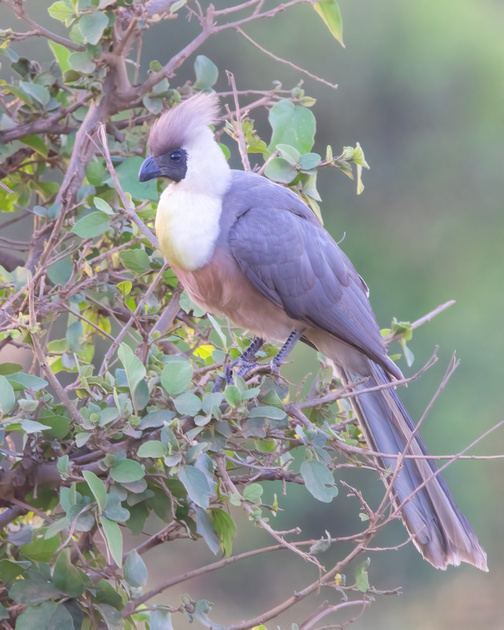

Bare-Faced Go-Away Bird


Eastern (Pale) Chanting Goshawk
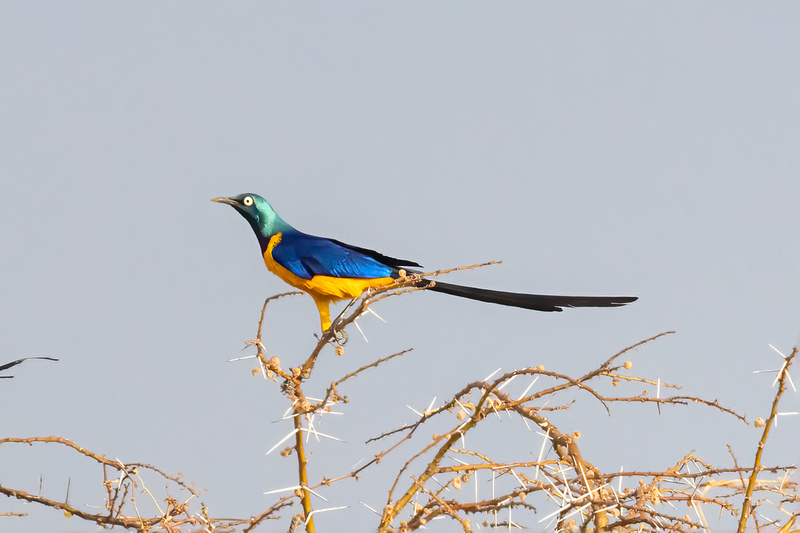

Golden-Breasted Starling
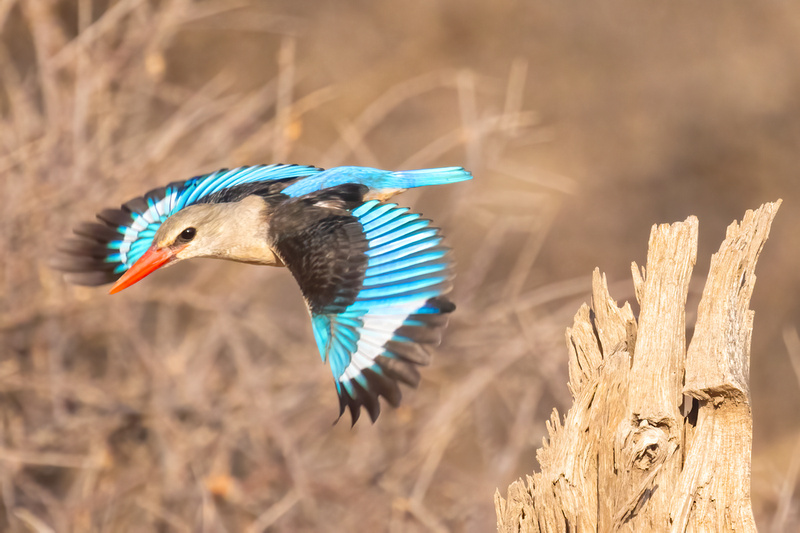

Gray-Headed Kingfisher
The lodge grounds are enclosed by an electric fence to exclude large animals. The fence proved ineffective at excluding baboons and vervet monkeys which were present everywhere on the grounds. We had 114 baboons pass behind our lodge unit one morning before daylight. The lodge employs several local Samburu tribesmen armed with slingshot to keep the baboons at bay.
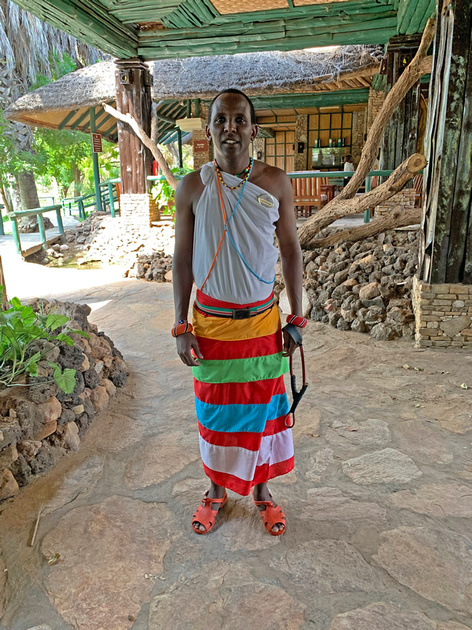

Samburu Tribesmen - Note The slingshot used as baboon/monkey deterrent
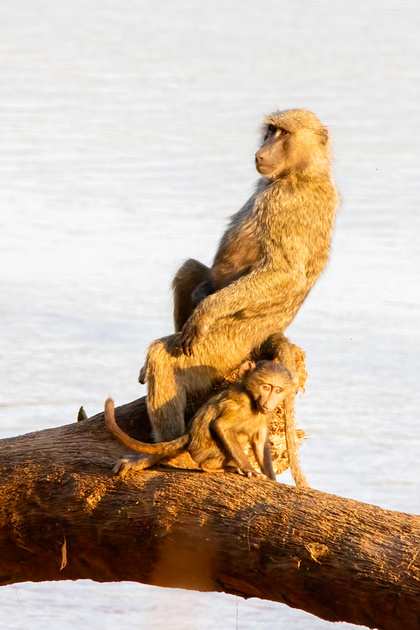

Olive Baboon
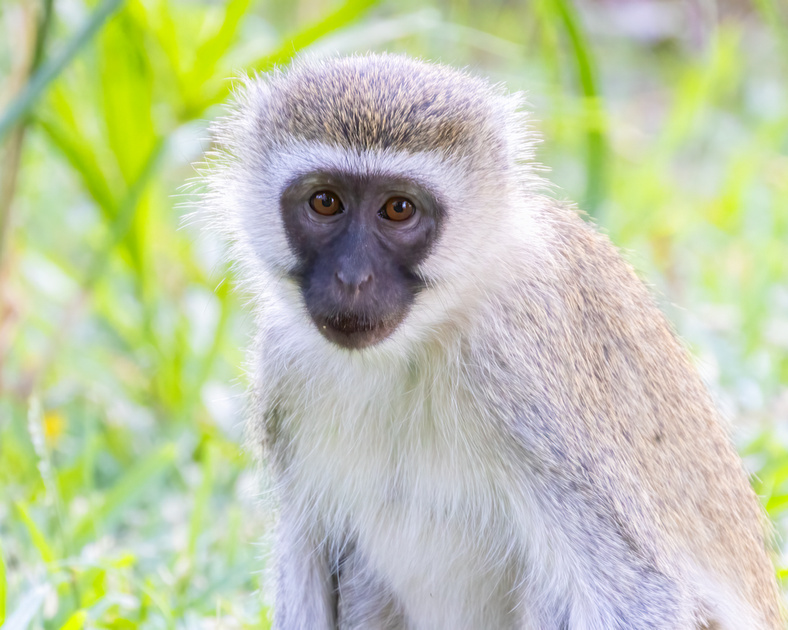

Vervet Monkey
One of the unique features of this lodge is a treetop restaurant. I returned to the breakfast table one morning with coffee for my wife and found a vervet monkey perched on the back of my chair. I will never know if my wife in her uncaffinated state recognized that the cute, hairy primate sitting across from her was not her husband.
We were able to photograph the Samburu five. The Greavey's zebra is the largest of the zebras and the most threatened. They differ from the more common plains zebra in that they are taller, have larger ears, and tighter stripes. Between 2,000 and 3,000 of this species are believed to remain in the wild.
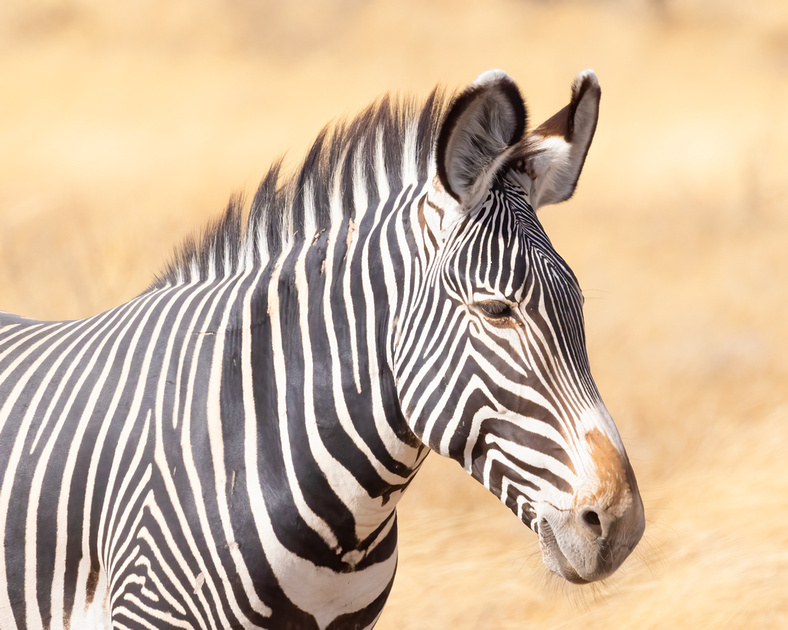

Greavey's Zebra
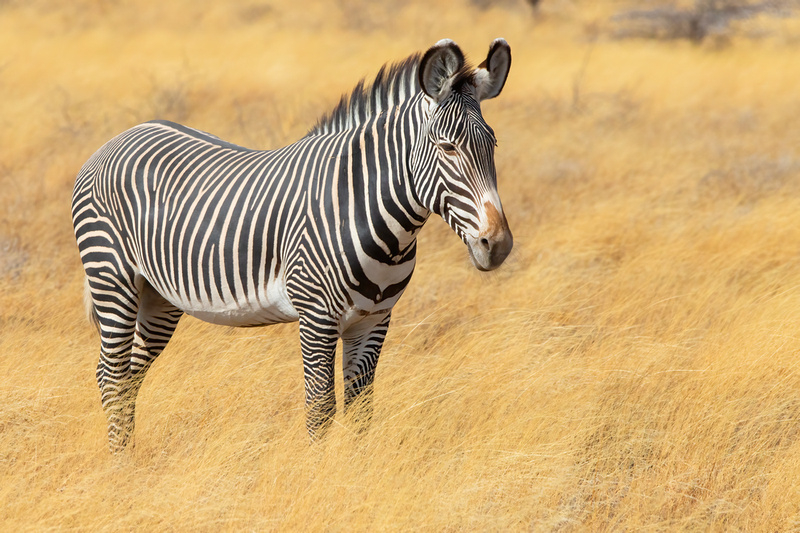

Greavey's Zebra
The gerenuk is a long-necked, long limbed, antelope. We frequently encountered them standing on their hind legs feeding on vegetation well above the level of other antelope. An interesting behavior that has lead to the unofficial name of giraffe gazelle.
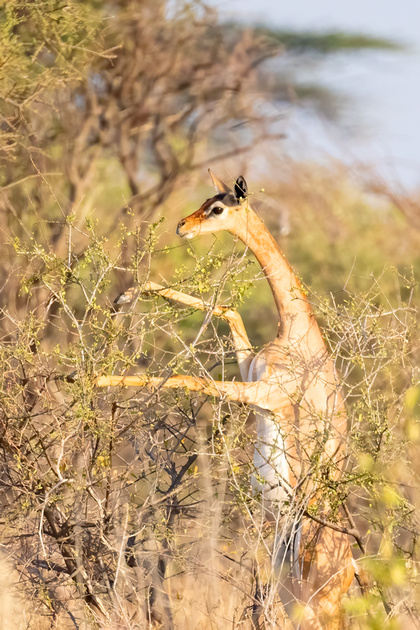



Gerenuk Female and Male
Reticulated giraffe were very common in the Samburu Game Reserve. We saw dozens on every game drive. The bright white outline on their dark spots is quite striking. About 8,500 are believed to remain in Somali, Ethiopia, and northern Kenya.


Reticulated Giraffe
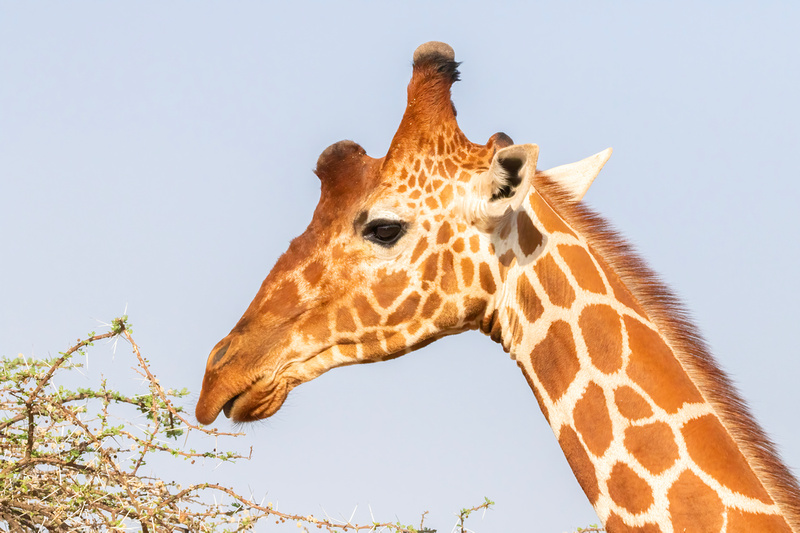

Reticulated Giraffe
We were able to observe and photograph a single male Somali ostrich. They differ from the common ostrich in that the males have bright blue necks and legs rather than the dull pink of the common ostrich. They are currently recognized as a full species and can be found in Ethiopia, Somalia, and Kenya.
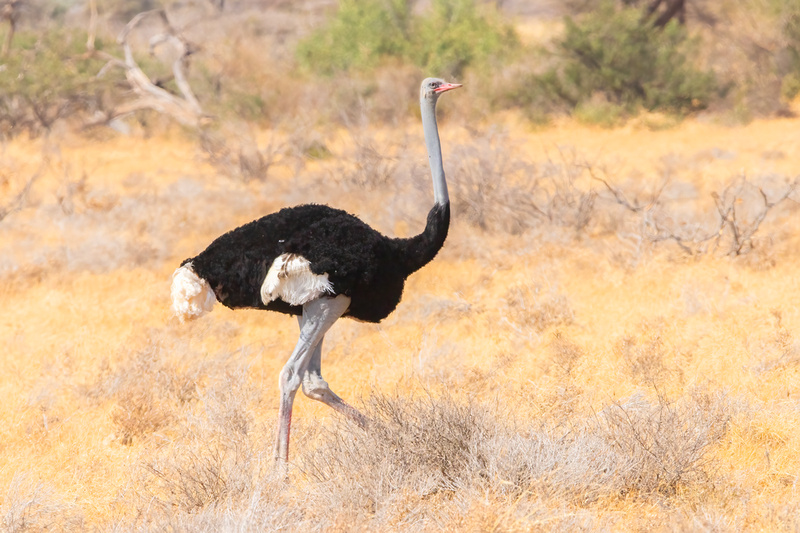

Somali Ostrich
The beisa oryx is a large, beautiful antelope. Both sexes carry impressive straight horns. We normally found them singularly but on one occasion we encountered a herd of around 60. Our guides indicated that many in a single group was quite unusual.


Beisa Oryx
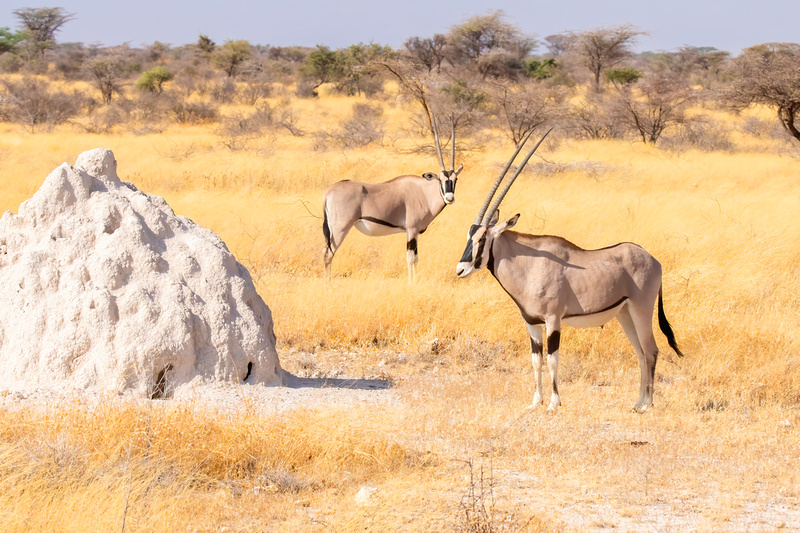

Beisa Oryx
In addition to the Samburu five, we had excellent opportunities to observe African savanna elephant, impala, Thompson's gazelle, dik-dik, African buffalo, defassa waterbuck, warthog, common waterbuck, baboon, vervet monkey, and Grant's gazelle.


Young African Savanna Elephant
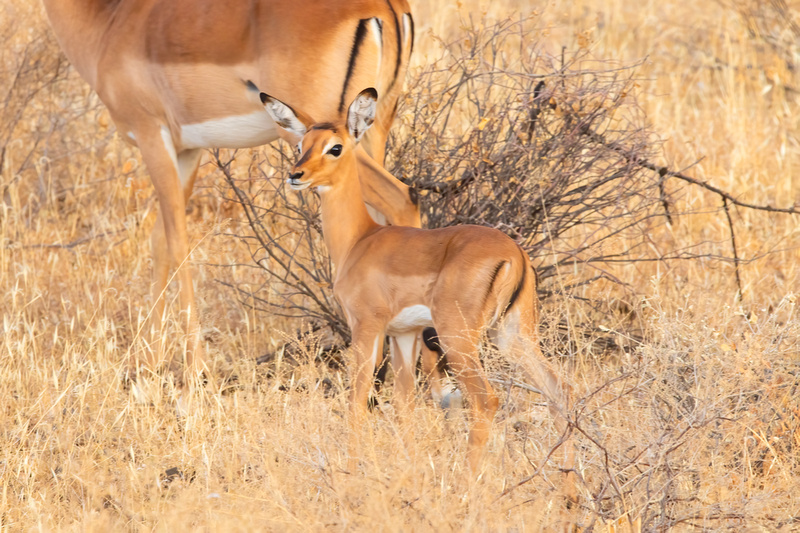

Young Impala
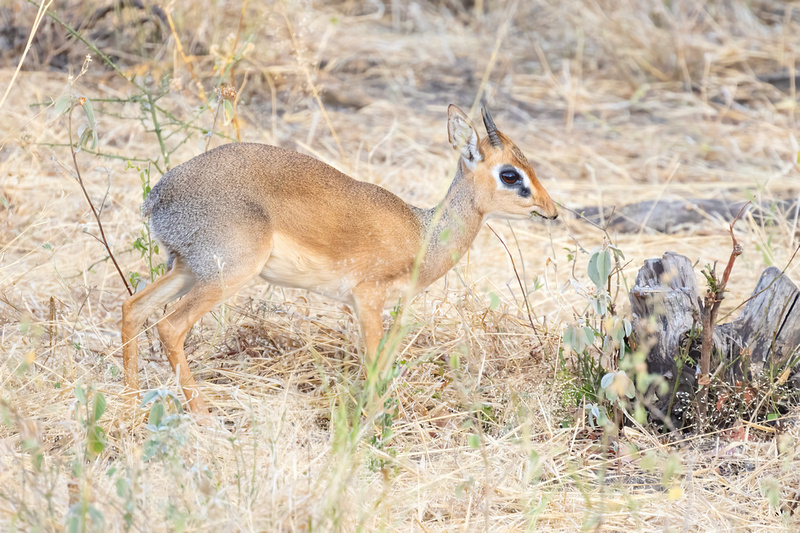

Dik-Dik
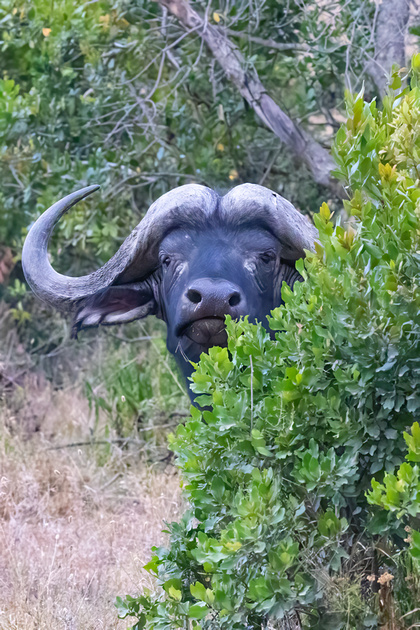

African Buffalo (What you see when you realize you have chosen the wrong bush as your bathroom)
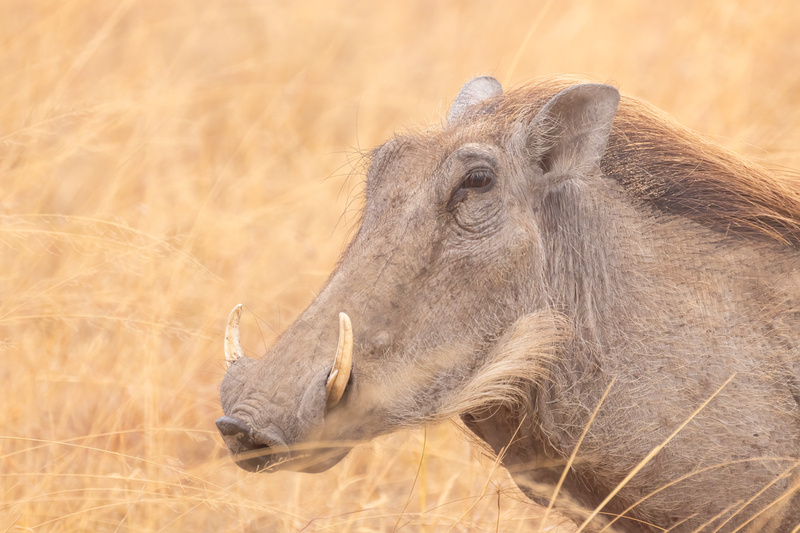

Warthog
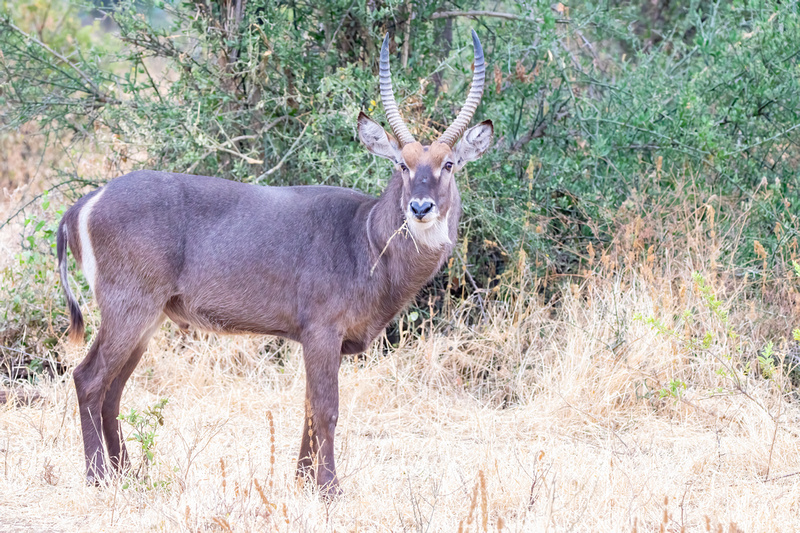

Common Waterbuck
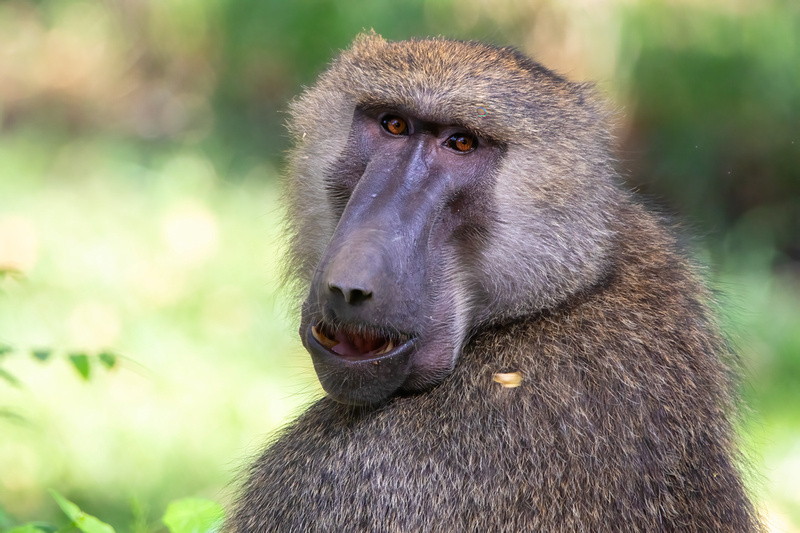

Olive Baboon
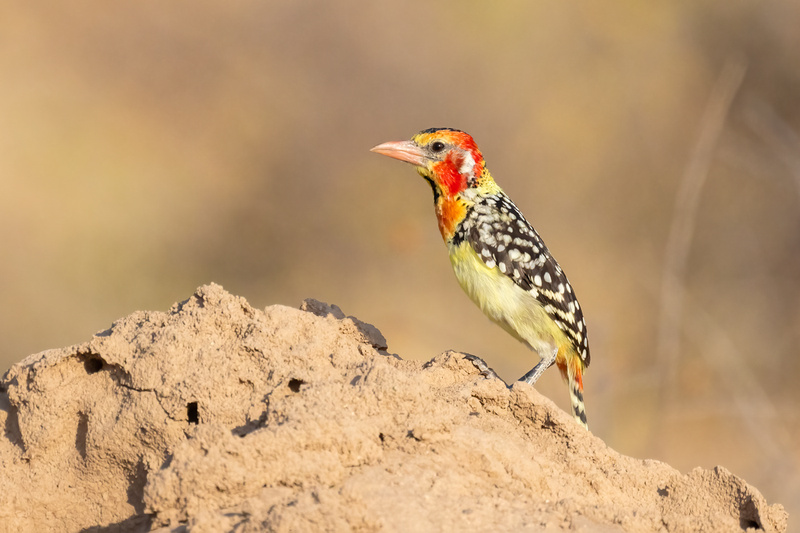

Red and Yellow Barbet
Sweetwater Game Reserve
This location was one of my favorite locations of the trip. The food was very good and the tents the nicest of any on the trip.This tented camp is within the Ol Pejeta Conservancy. Very nice tents are arrayed in a half circle around a large waterhole. We could sit on our front porch and the wildlife came close as they visited the waterhole throughout the day and night. The camp had some weak lights on the waterhole at night. Not enough light for photography, but enough for species identification. About 165 critically endangered black rhino are present within the Ol Pejeta Conservancy. Southern white rhino were introduced in this area and currently the Conservancy supports 44 white rhinos. This location also offered some of the best birding of the trip. The Conservancy has invested heavily in wildlife protection employing tracking dogs, drones, and wardens on foot, motorbike, and truck patrols.
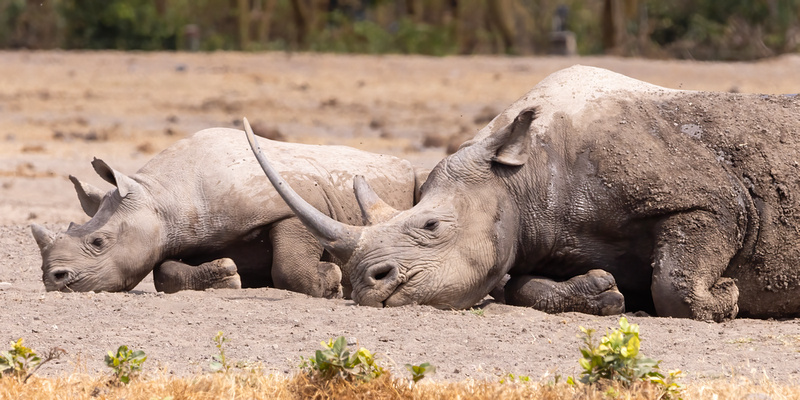

Black Rhino


Black Rhino
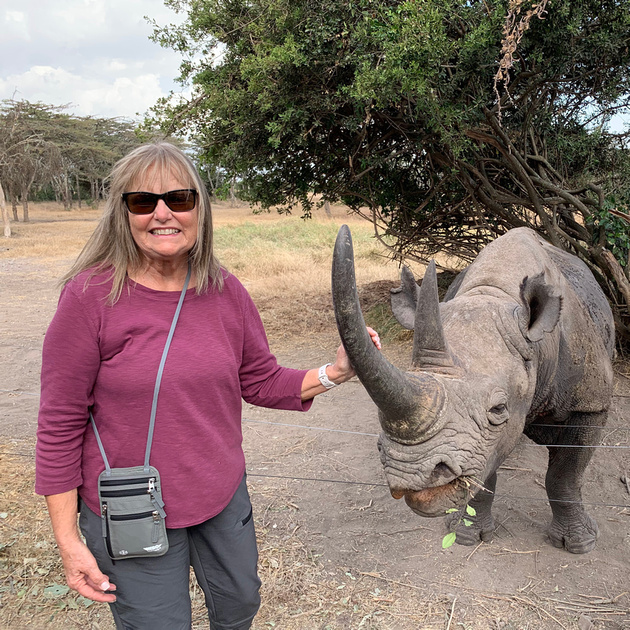

Becky Pets the Rhino
While at Sweetwater Camp we visited the nearby Jane Goodall Chimpanzee Sanctuary. Jane Goodall had visited the sanctuary the week before we arrived. Chimpanzees are not native to Kenya. The chimps housed at the Sanctuary are all rescues. I believe they have around 35 total chimps separated in two populations. Very difficult photography as these animals were surrounded by a dense electric fence and visitors are kept well away from the fence and chimps. The chimps are quite intelligent. One became an escape artist after he learned to short out the fence using sticks. He is now doing hard time in solitary so that he does not teach others his trick. Chimpanzees and humans are closely related and share approximately 98.8 percent of their DNA with humans. Perhaps more with some humans.


Robust Chimpanzee
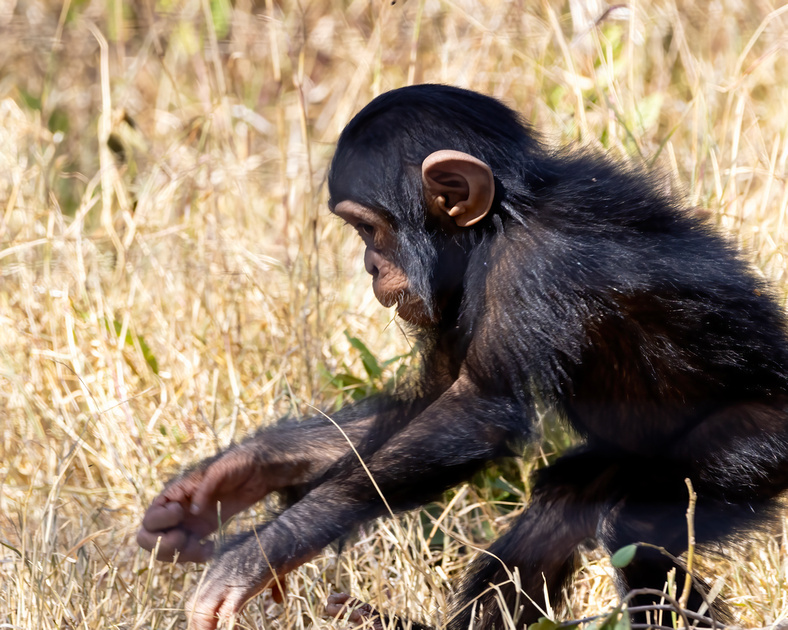

Robust Chimpanzee (Young)
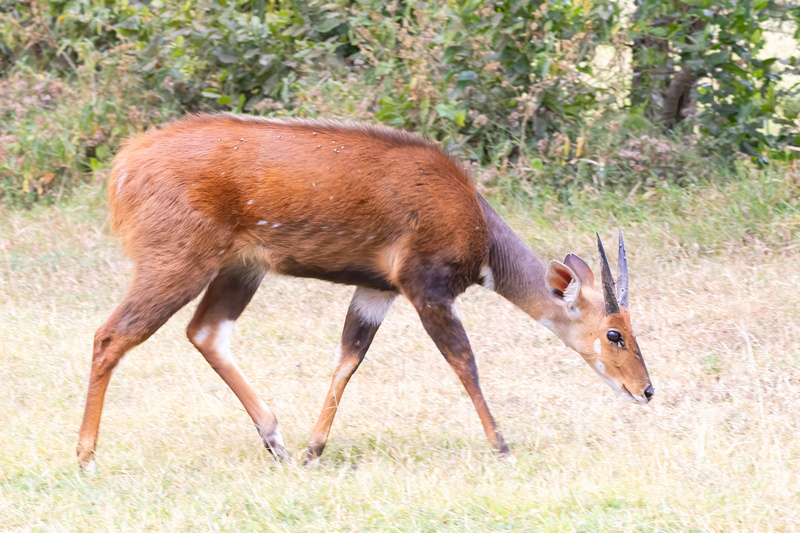

Bushbuck


African Buffalo
We observed our first lions at Ol PeJeta. Other new mammal species included common eland, plains zebra, bushbuck, chimpanzee, hartebeest, spotted hyena, African hare, and black-backed jackal. We encountered a jackal den with 4 pups. Mom went off to hunt and they frolicked, just like puppies. Lots of fun to watch.


Common Eland - Note the Hitch-Hiking Yellow-Billed Oxpeckers


Black-Backed Jackal (Pups) at Play
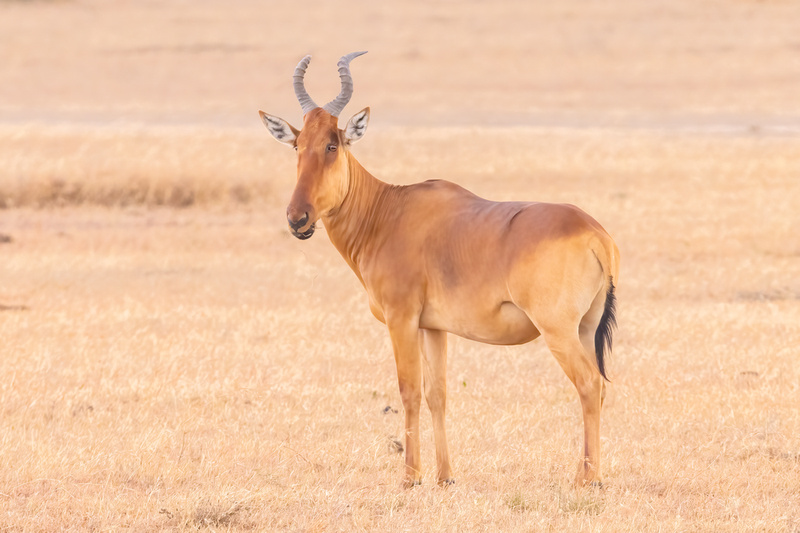

Hartebeest
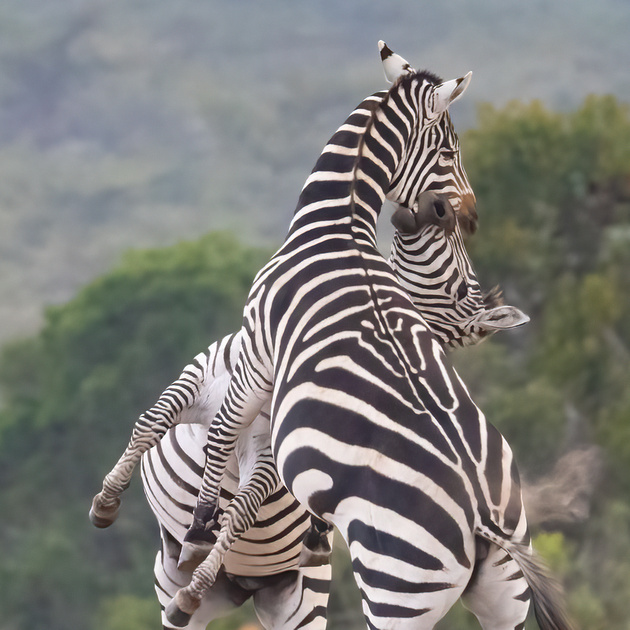

Plains Zebra - Stallions in Combat
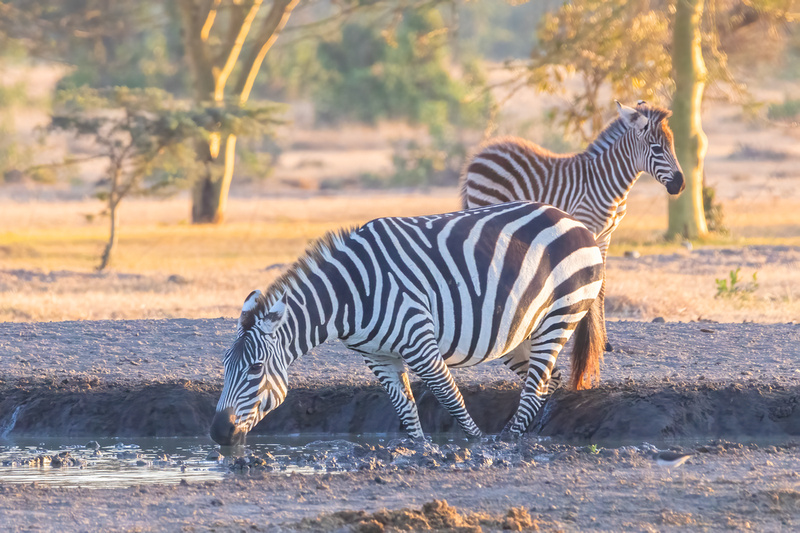

Plains Zebra - Mare and Foal
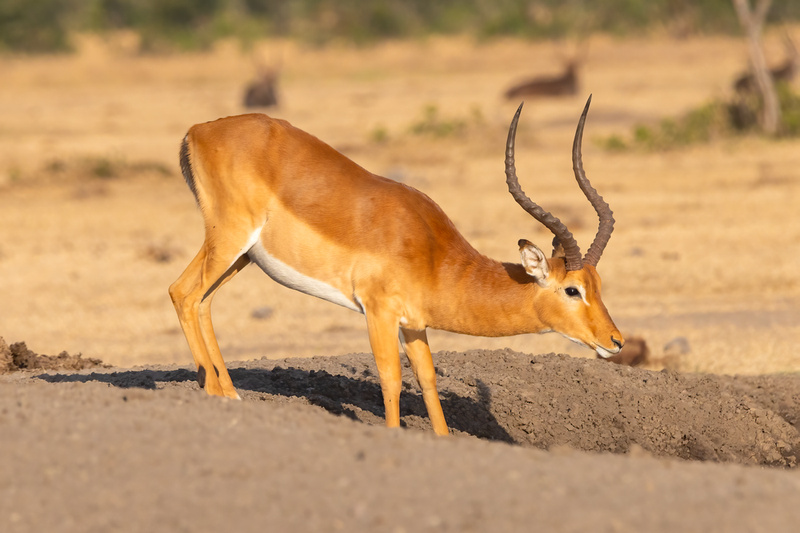
 \
\
Impala


Sacred Ibis with Snack
We experienced a night game drive while at Sweetwater Camp. This was our only night game drive as they are not allowed in the National Parks. We ended up spotlighting several spotted hyena and black-backed jackals.
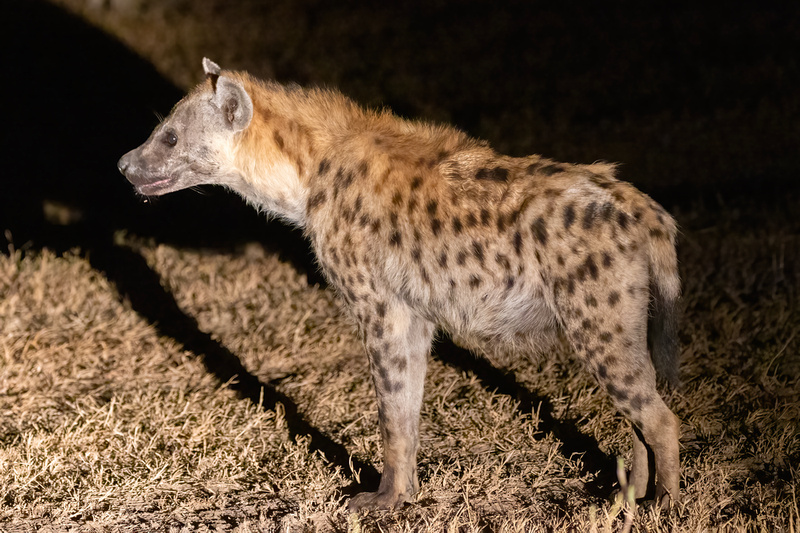

Spotted Hyena
The tent attendants placed a hot water bottle in our bed each night when they turned the mosquito netting down. A nice touch, but a bit of a surprise if you are not expecting it. I should note that we got the CDC recommended yellow fever vaccination and took malaria pills, but never saw a single mosquito.
The last morning before we left Sweetwater Camp, I skipped breakfast to work on my life bird list. It was time well spent. In 90 minutes I picked up an olive woodpecker, speckle-fronted weaver, Ruppell's starling, black kite, black-headed heron, Pemba green pigeon, red-fronted barbet, and yellow-breasted spurfowl. Quite a morning!
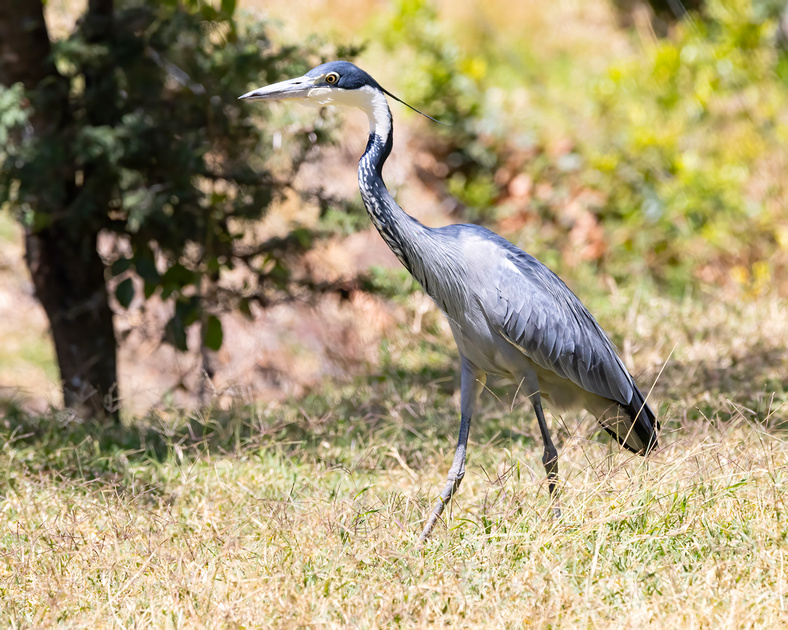

Black-Headed Heron


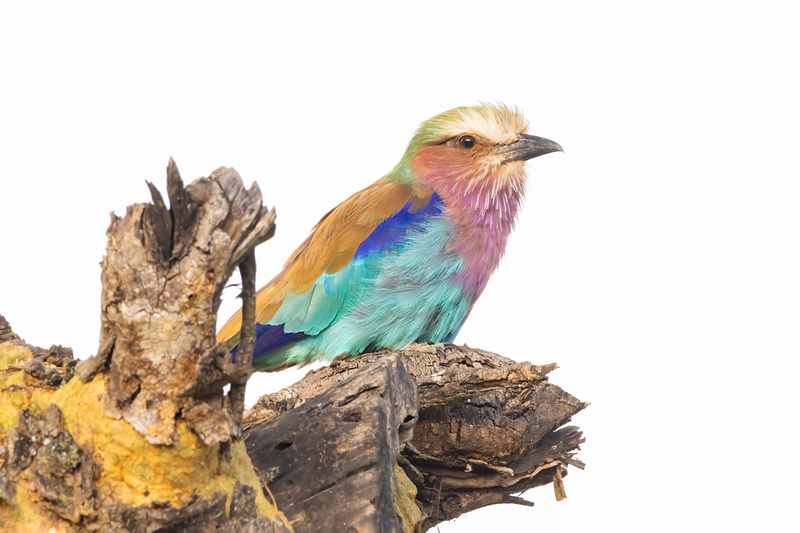

Lilac-Breasted Roller
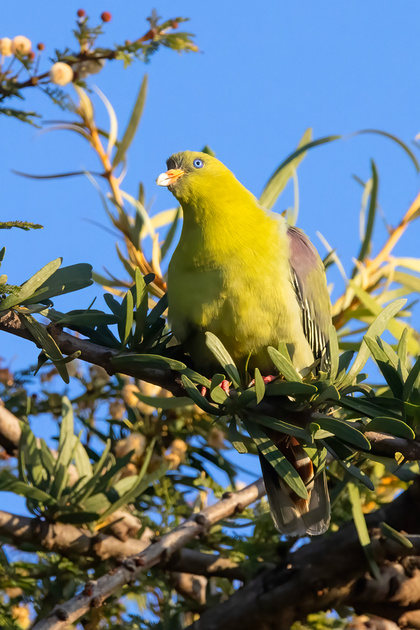

Pemba Green Pigeon
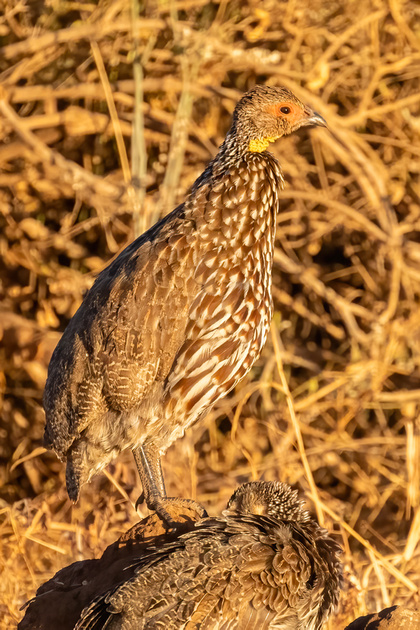

Yellow-Necked Spurfowl
Nairobi
We traveled in our safari trucks from Sweetwater Camp back to the Eka Hotel in Nairobi. Nairobi is a city of about 4 million and downtown was similar to any major metropolitan area with malls and high rise buildings. It also contains Kibera Slum. This slum is immediately adjacent to the downtown and is inhabited by around one-million people all living within a square mile. We had a walking tour of the slum, learned its history and met many of the inhabitants. It was very interesting and also pretty uncomfortable.
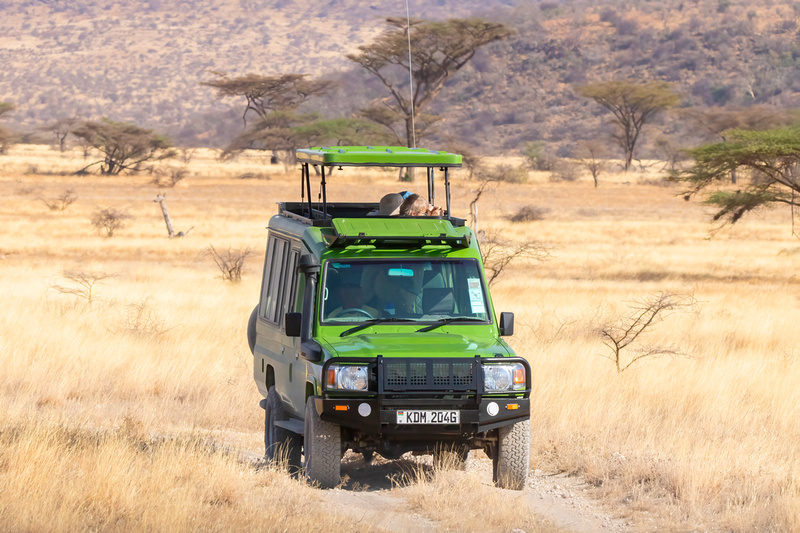

Safari Trucks - Custom Toyota Trucks with a fully enclosed cabin and a pop-top roof.
We were joined in Nairobi by three additional travelers and experienced the open-air Carnivore Restaurant as our OAT welcome dinner. They serve Kenya style BBQ including, camel, ostrich, whale, and crocodile in addition to pork, beef, and chicken. Not really a favorite of the vegetarians in our group.
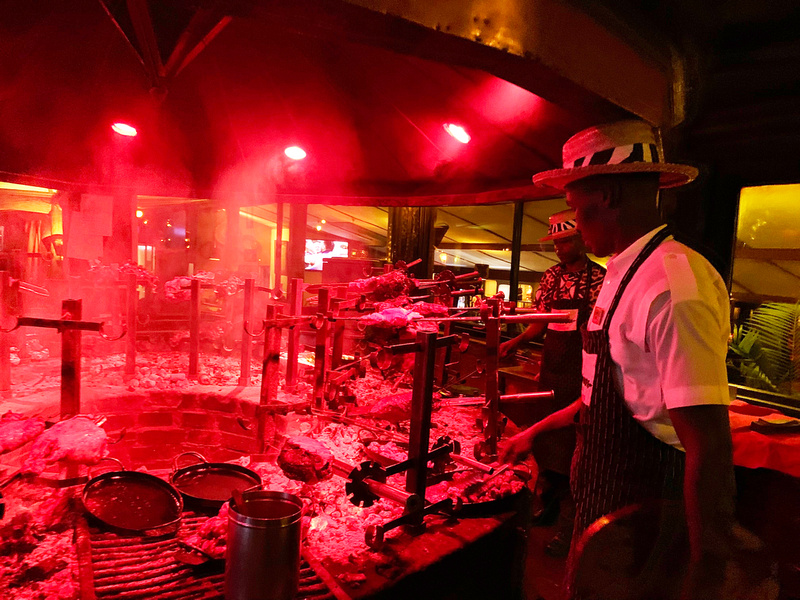

The Grilling Pit at The Carnivore Restaurant
We also visited the Sheldrick Elephant Orphanage on the outskirts of the Nairobi National Park. They have about 35 young, rescued elephants and two young rhinos. These young elephants are gradually reintroduced to the wild and will successfully join wild herds. The elephants came out in two groups with the youngest group first. They each ran to a keeper and quickly guzzled a gallon or two of milk. The orphanage was the first to develop a formula suitable for elephants. After their bottles, they engaged in play in the mud hole. Lots of roughhousing and mudslinging. This is a very popular attraction in Nairobi and it was difficult to get photographs without people in the background. We adopted an elephant in our three-year old granddaughter Piper Magnolia's name. She was a little disappointed when we returned home without her elephant in our hand luggage.


African Savanna Elephant At the Sheldrick Elephant Orphanage


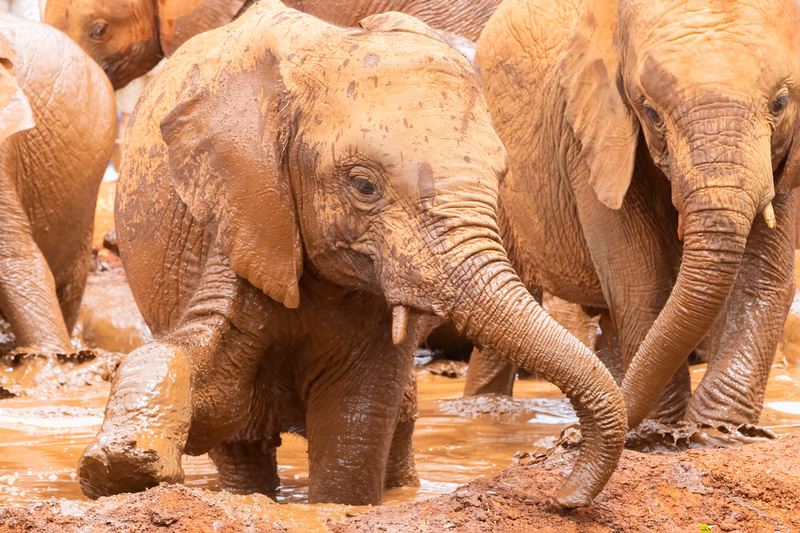

African Savanna Elephant at the Sheldrick Elephant Orphanage


Bottle Feeding an Orphaned Elephant
The next day we visited the Giraffe Center near Nairobi. This is a captive breeding facility for the endangered Rothschild's giraffe. About 2,000 Rothschild's giraffe exist in the wild. This species is one of the tallest species of giraffe (up to 19 feet) and is best differentiated from other species of giraffe by their creamy white, unspotted legs. The Center has an elevated boardwalk to allow hand feeding by visitors. Very popular activity with the selfie crowd.
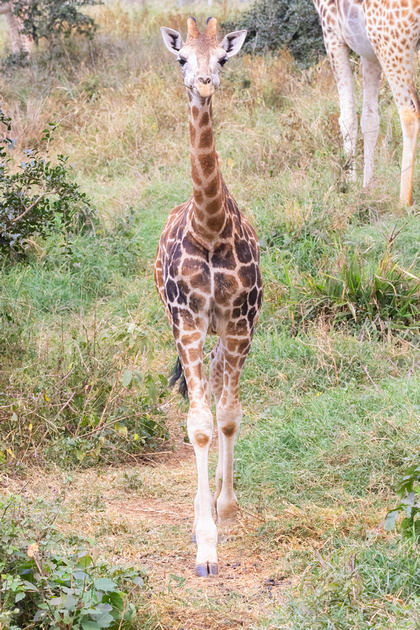

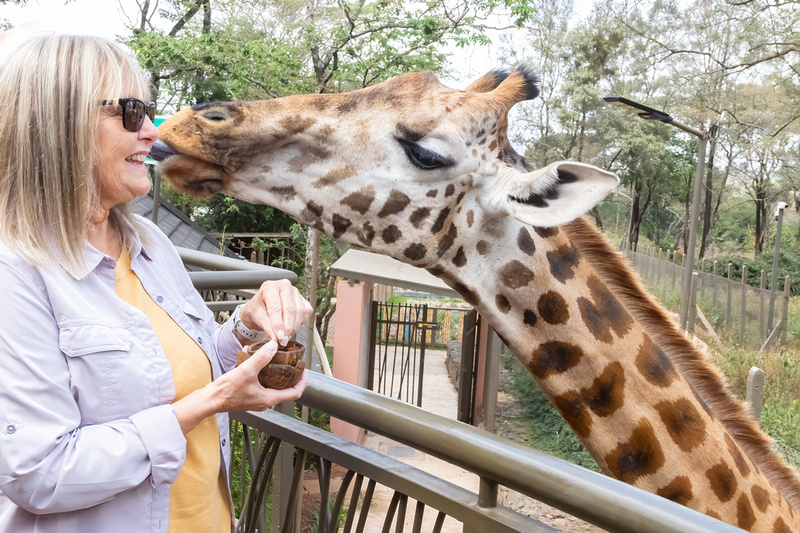

Becky Receiving a Kiss from a Rothschild Giraffe
On our last morning in Nairobi, we caught a Kenya Air flight to Masai Mara National Reserve on the border of Kenya and Tanzania. I was very much looking forward to visiting this location as I believed it would offer the best photo opportunities of the trip.
Almost immediately we came across a pair of lions mating. With all the snarling and biting it did not appear that they were enjoying their interlude. The guides indicated that was normal lion mating behavior. This behavior includes up to 50 copulations per day for the three to four days that the lioness is in season.
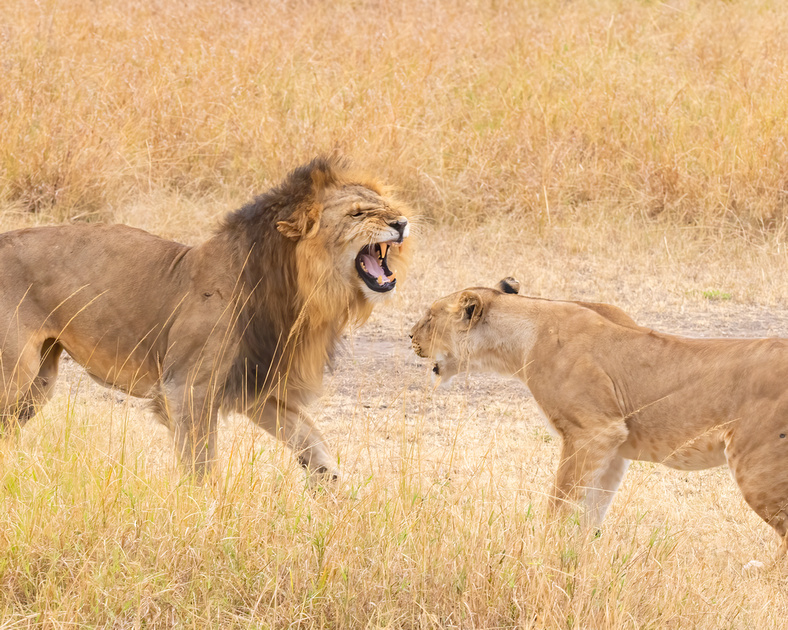

Mating Lions
A few miles down the road while crossing a previously burned area we spotted an adult cheetah. We got some nice close looks at our first cheetah.
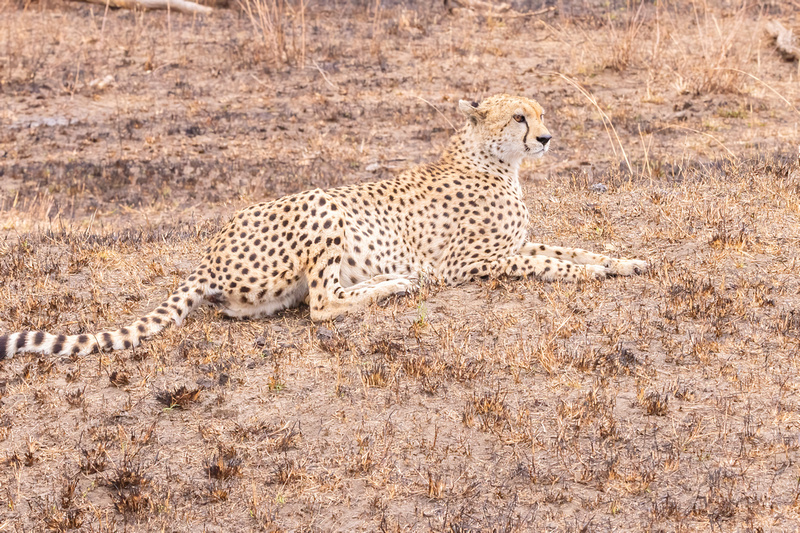

Cheetah
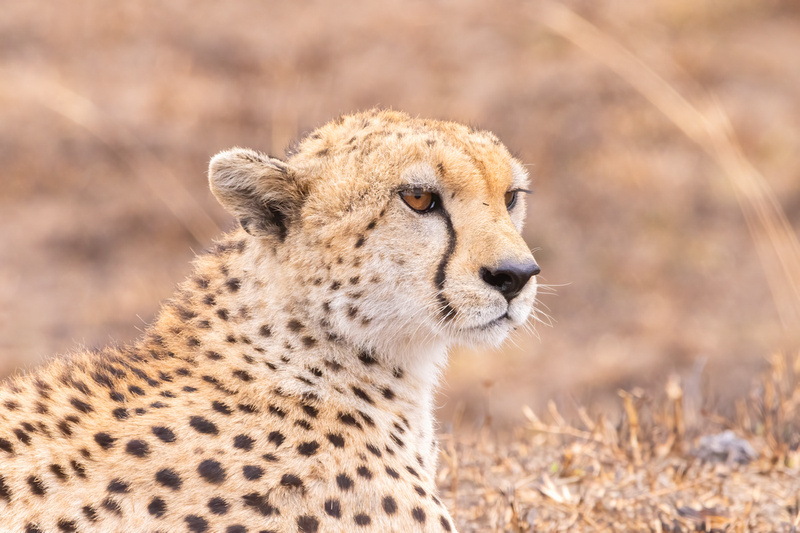

Cheetah
We stopped for a coffee and pastry break and had to rapidly dump everything when a male lion was spotted heading directly through the tall grass towards our gathering. He veered off and I was able to get some nice images of him as he cruised along the skyline. We also found a large pack of banded mongoose. A very good start for Masai Mara.
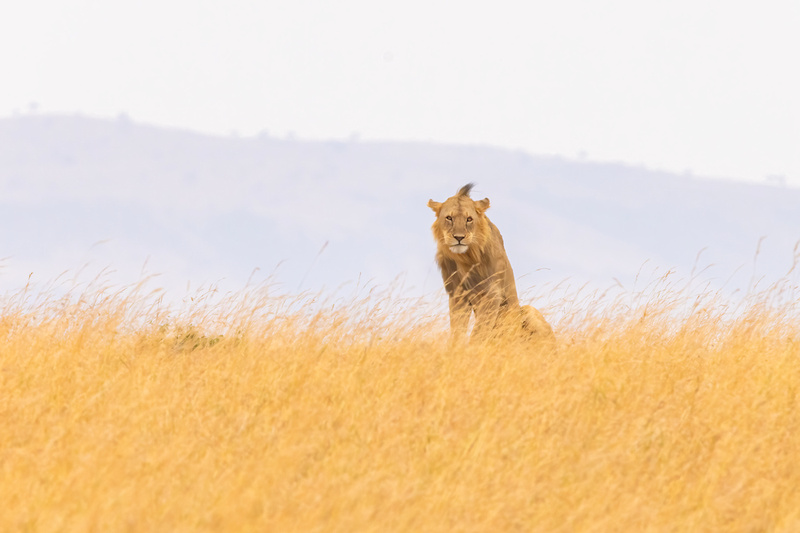

Young Male Lion (Going for the Mohawk)
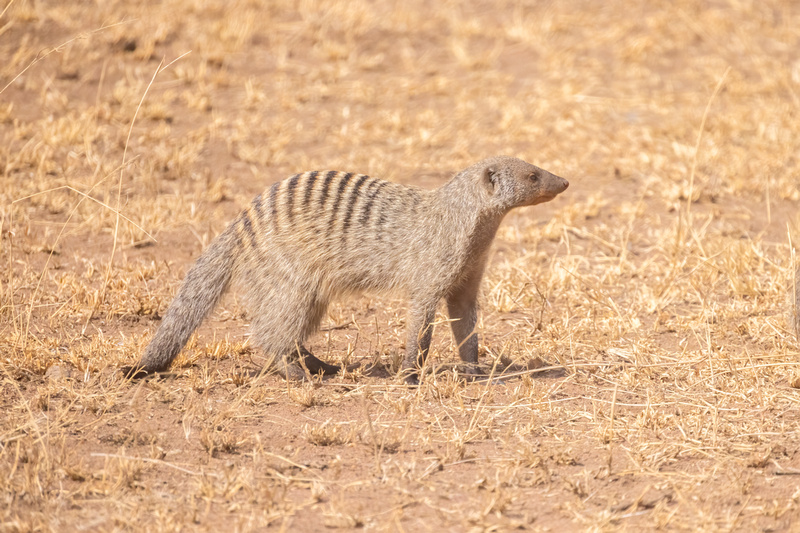

Banded Mongoose
We headed for our lunch at our lodging (Mara Sentrim). This camp was our least favorite as everything was a little worn and the food choices were poor. However, the wildlife viewing on the game drives continued to be productive.
Over the local guides objections, our trip leader headed us toward the Mara Triangle. The Mara Triangle is separated from the Masai Mara National Reserve by the famous Mara River and was a rough three-hour drive from our camp.
Upon entry we immediately came across a wounded lioness on a wildebeest kill. A short distance later we crossed a ridgeline and found the great migration. Approximately 175,000 wildebeest and zebras had crossed into the triangle the night before. Truly an inspiring multitude. As we slowly parted the herd, the male wildebeest low moaning call was heard all around us.
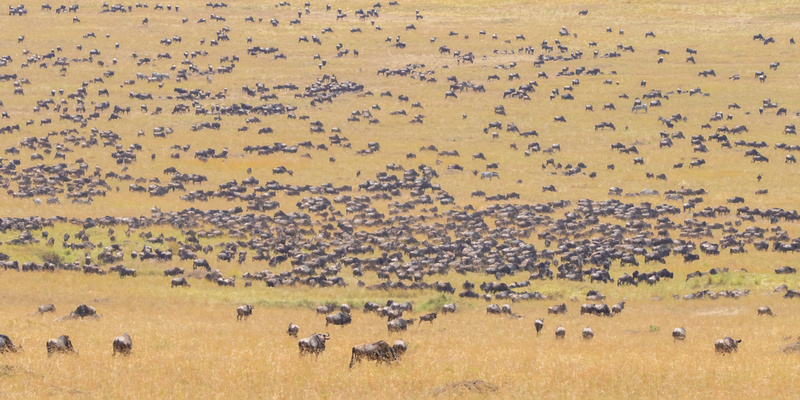

The Great Migration
In the midst of the herd we found yet another pair of mating lions. The prey species must have known that the lions were otherwise occupied as they came dangerously close to the amorous felines.
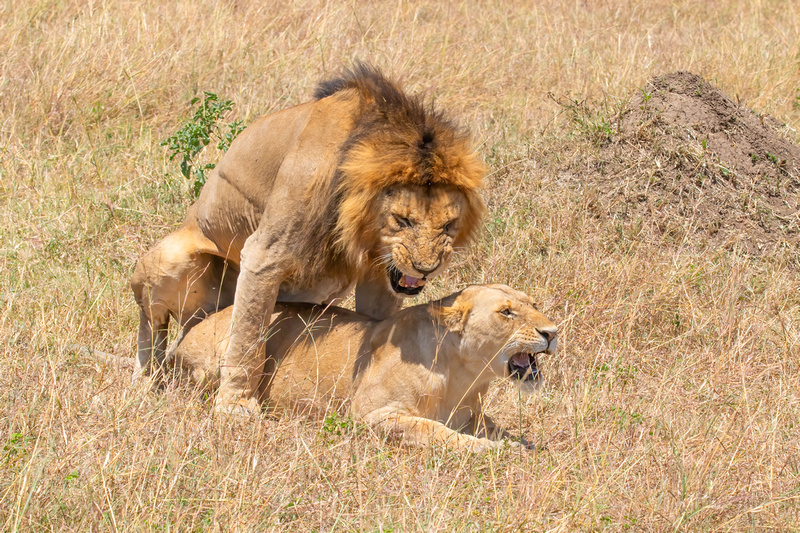

Mating Lions
We spent a couple of hours with the herd and then headed for one of the Mara River crossing points in hopes of seeing a mass crossing. No luck on the crossing, but we were able to photograph a large pod of hippo in the river directly below us.
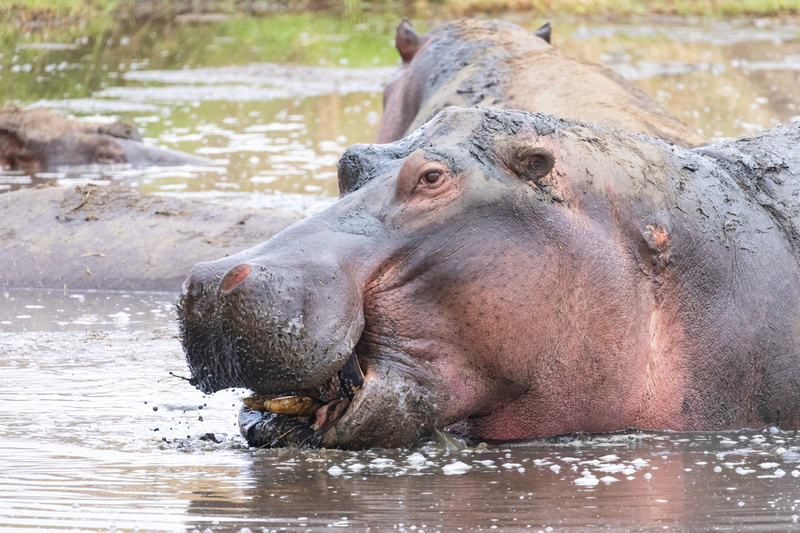

Common Hippopotamuses
This was the third attempt by two of our fellow travelers to see the migration. They were delighted. It turned out that our trip leader's brother works for one of the wildlife agencies and had provided the intelligence on the herd crossing into the triangle.
On our last full day in the Masai Mara we encountered a couple of spotted hyena and several other scavengers (lappet-faced vulture, tawny eagle, jackals, and bateluer) in a small area. The hyenas had killed and mostly consumed one of the Masai cattle the previous night. We followed the spotted hyena for some distance as he easily carried the cows head. He eventually found a shallow pool and submerged the head. Marinade? The guides indicated that this was standard hyena tactic. By submerging the head for later consumption he was reducing the smell for other predators or scavengers to track in on. So much interesting wildlife behavior.
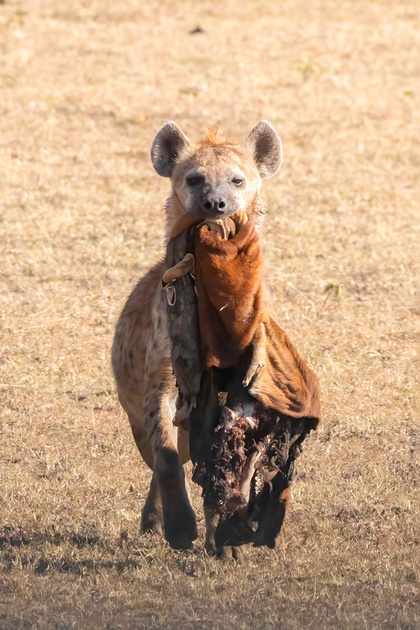

Spotted Hyena with a Masai Cow's Head


Bateleur
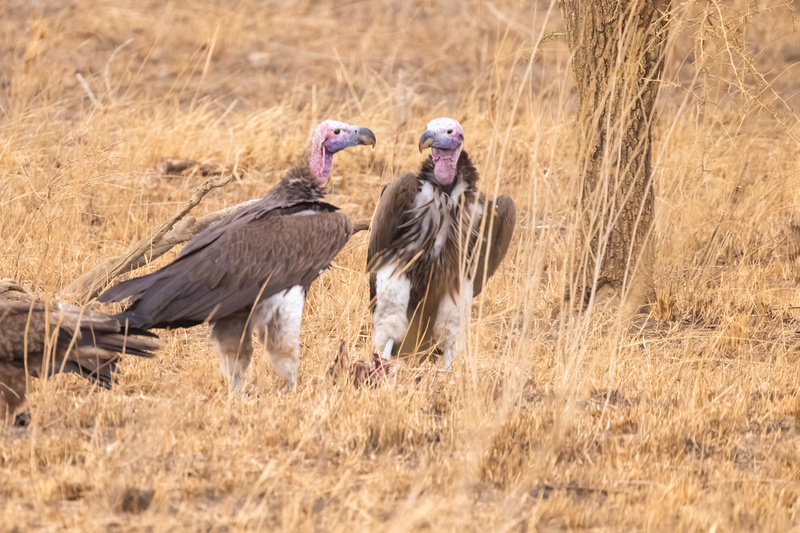

Lappet-Faced Vulture
We also had our first leopard sighting. We were able to get quite close but photo options were limited as he was in a densely vegetated tree and distinctly backlit.
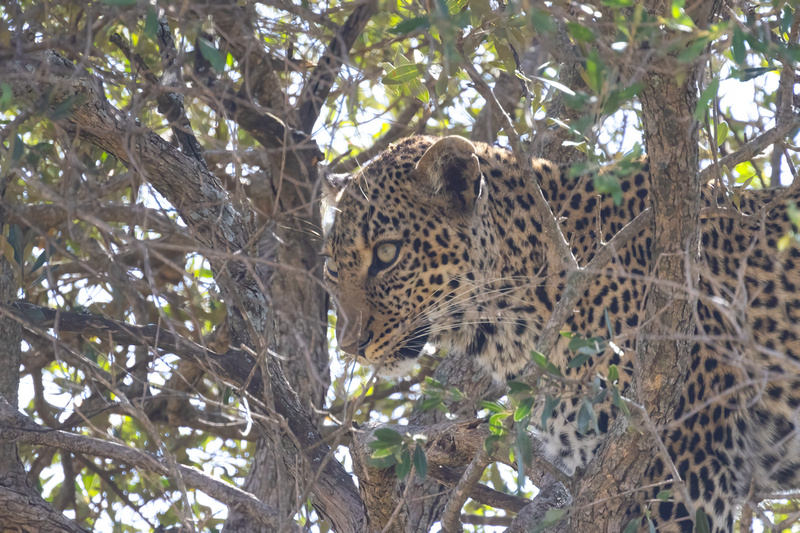

Leopard
Shortly afterwards we came across a pride of lions sleeping the day away. Apparently, there were 18 present, although I only saw six. No decent photo opportunities.
The next morning after a very rapid game drive to the airstrip we departed and flew back to Nairobi where we were met by two safari trucks. We left Nairobi and drove five hours to Amboseli National Park at the base of Mount Kilimanjaro. The country surrounding the park was desert. The park itself is fed by springs from Mount Kilimanjaro and contained some vast, lush, wetland.


Mount Kilimanjaro - 19,341 feet above sea level
Ambosoli National Park is known for its high elephant population and is home to a few of the remaining super tuskers.
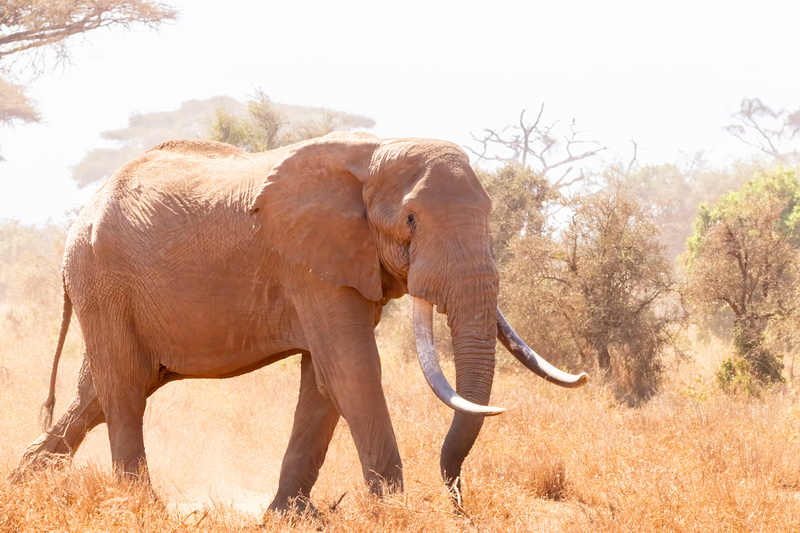

African Savanna Elephant
After an afternoon game drive that added a few life birds to my list we checked into our next camp, Sentrim Ambosoli. This camp was an upgrade from Sentrim Mara and had beautiful grounds and abundant wildlife.
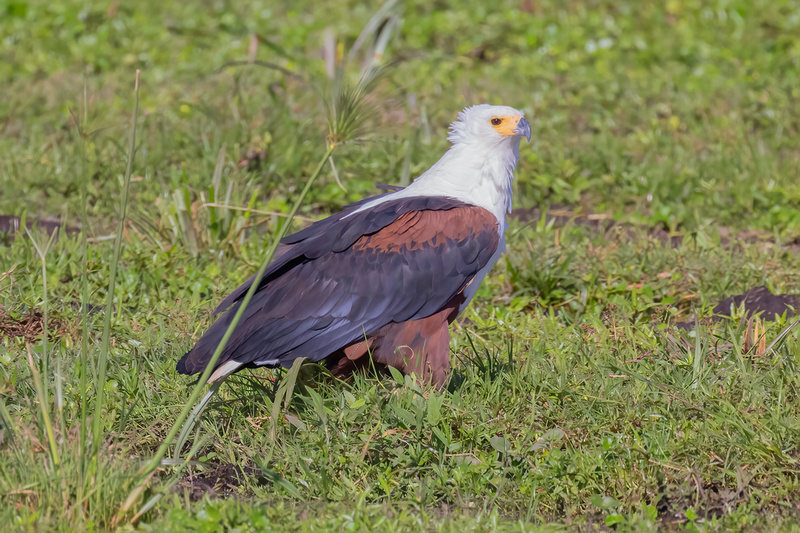

African Fish Eagle


African Jacana
The next morning we visited a local Masai village. The Masai have traditionally been nomadic cattle and goat grazers, constantly following the grass. However, the chief in the village we visited had realized the value of education and these Masai had become resident rather than nomadic, so that children could go to school. Other progressive departures from historic practices included discontinuation of female genital mutilation. While it is illegal, it still occurs. At a minimum FGM involves surgical removal of the clitoris. FGM has been practiced to insure virginity at marriage and fidelity afterwards. This village does not practice polygamy, which is still a common practice in other Masai villages.
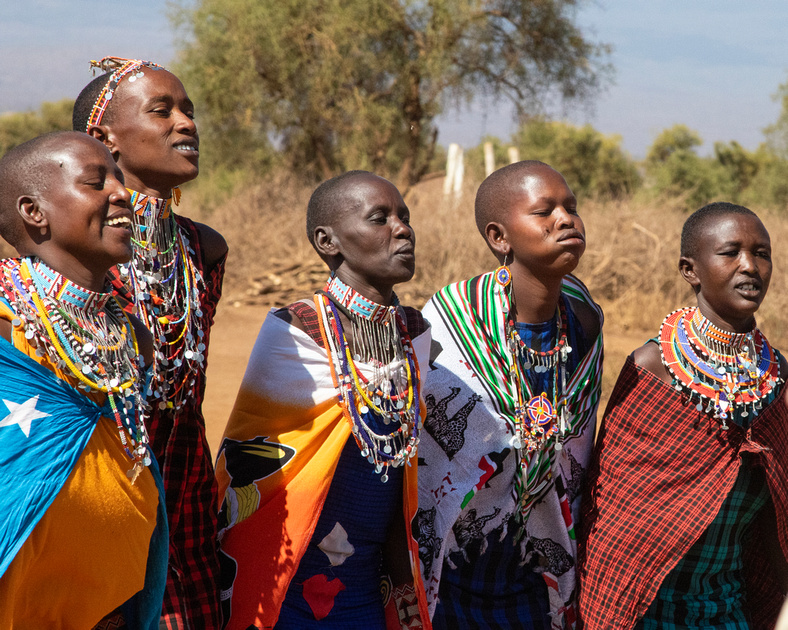

Masai Singers


Masai Dancers
Masai wealth is determined by the number of cattle they own. A wife costs 20 cows. They proudly showed us their livestock. They had developed a contraceptive device fitted to the billy goat. Effective, but no doubt quite frustrating for the goat. All-in-all the visit to the Masai was very interesting. At this village at least, they have embarked on some major shifts in traditional practices in a single generation.
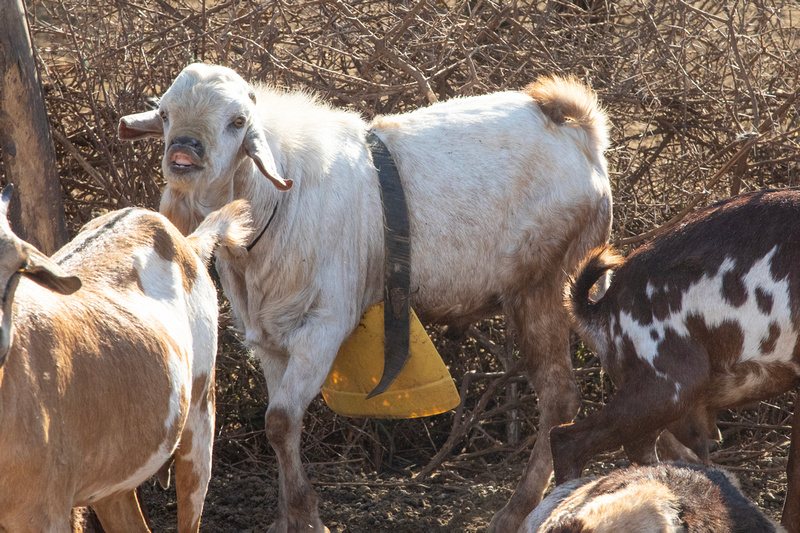

Masai Male Goat Contraceptive
That afternoon we had another game drive to another portion of the park. This area included extensive wetlands. Vast numbers of lesser and greater flamingo were present feeding in the shallow waters. African fish eagle, gray-crowned crane, great white pelican, pied avocet, African jacana, malachite kingfisher, blue-billed teal, red-billed duck, black-winged stilt, squacco heron, African spoonbill, and sacred ibis were all observed.


Greater Flamingo
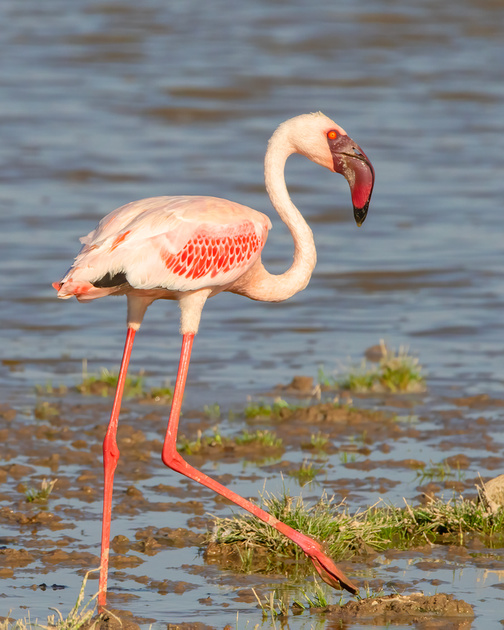

Lesser Flamingo
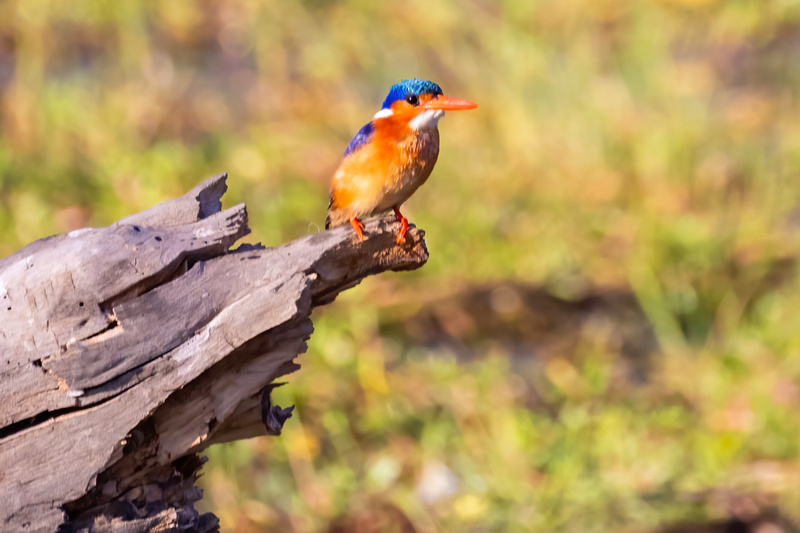

Malachite Kingfisher
We saw our first reedbuck and discovered a spotted hyena den with numerous pups not far off the roadway. The dull black pups were very active and playful. Hippo and elephant were both commonly observed.
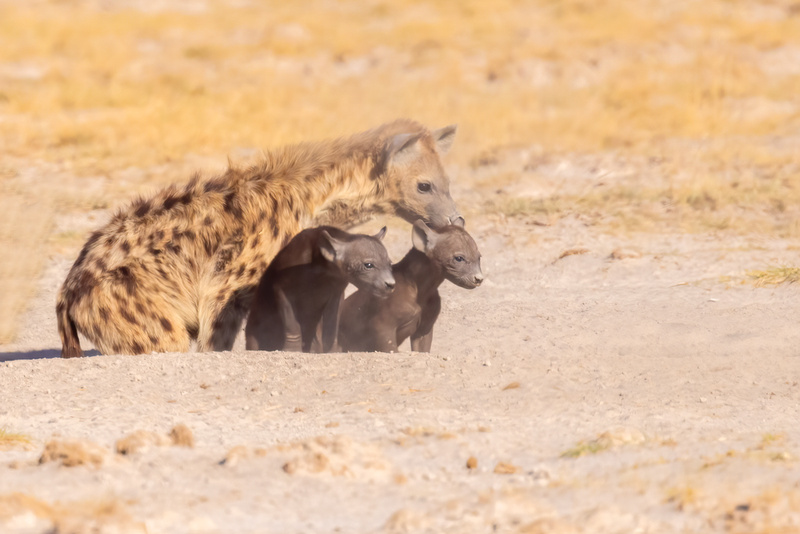

Spotted Hyena
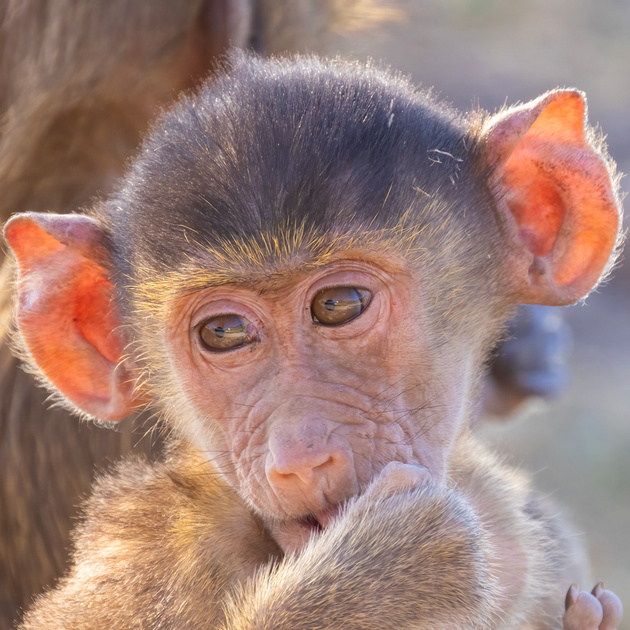

Young Baboon
Due to the limits on blog size in Zenfolio, the Tanzania portion of the trip will be presented as a separate blog.